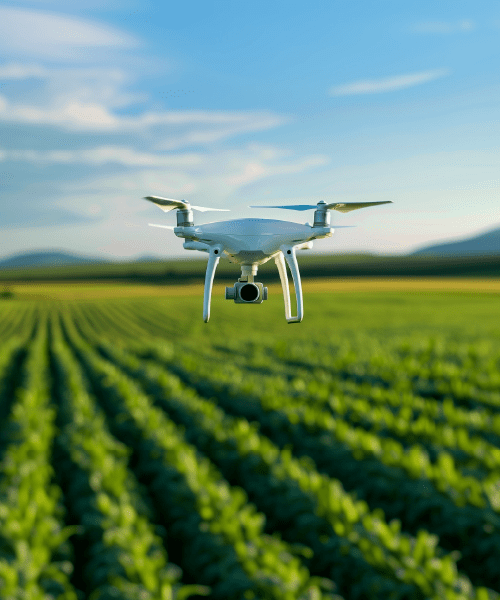
Precision agriculture
Technology at the service of the field
Regenerative agriculture
Regenerate the soil to revitalize the plant
The soil is the starting point for life and its health is key for the balance of ecosystems. Factors such as erosion, contamination, or human action itself represent challenges whose impact can be minimized through practices that seek, precisely, to regenerate the earth to ensure an environmentally friendly future.
Regenerative agriculture proposes a change in approach. Far from limiting itself to reduce the environmental impact, it is committed to promoting soil fertility and biodiversity. Regenerative agriculture advocates, therefore, to return life to the soil: "the only magic material that turns death into life," as Sadhguru ensures, the Indian philosopher and founder of the Save Soil movement, supported and taken part in by the United Nations.


What is regenerative agriculture?
It was in the 80s when the term regenerative agriculture was coined for the first time. Then, farmers and scientists started to study the effects of the use of chemicals and pesticides on the health of the soil and, consequently, also on people. This awareness was key to promoting new agricultural practices, more environmentally friendly techniques that laid the foundations for what is today the next level of organic farming.
The main aim of regenerative agriculture is to restore the health of soils while increasing biodiversity and reducing greenhouse gas emissions, generating more resilient agricultural systems in the face of present and future agricultural challenges. Unlike conventional agriculture, which tends to make use of natural resources, this approach proves that it is possible to regenerate and revitalize ecosystems through the implementation of practices that copy natural processes.
With this holistic approach, there are increasingly more examples of regenerative agriculture aimed at "curing" the earth, making it more productive and able to sustain crops in the long term, both from the environmental, social, and economic point of view, as it provides farmers with tools to improve productivity without depending too much on chemical inputs. The result is an agricultural system that not only feeds people, but also looks after the earth.
4 principles of regenerative agriculture
For a crop to be considered regenerative agriculture, it must be environmentally friendly. However, you must also not forget that the agricultural activity in question must be profitable. Achieving it depends, largely, on addressing the four pillars that underpin the success of regenerative agriculture and which can be summarized in the following:
What techniques does organic and regenerative agriculture use?
The combination of traditional techniques with modern scientific innovations is behind the growing interest in regenerative agriculture. That balance allows this focus to be transferred to the field with a certain ease making it so that, in many cases, it is enough to return to techniques from the past to ensure the viability of the activity in the future. Some of the most used are:
Benefits of regenerative agriculture in society today
The advantages of opting for regenerative agriculture practices go beyond improving soil quality or protecting biodiversity. Its proliferation has a positive impact both for human life and for the environment. Crops produced in regenerative agricultulture, for example, are richer in nutrients. As they are free of chemical products and grow in healthier soils, this type of food offers greater nutritional quality and, as a result, improves food health.
Regenerative agriculture is also key for the revitalization of rural economies promoting production systems in which, the reduction of dependence on fertilizers and pesticides, for example, allows the reduction of production costs. Moreover, by focusing on local production and the use of own resources, a more self-sufficient and equal economic cycle is created that can promote other activities such as ecotourism.
Repsol and regenerative agriculture in the field
Protection of the environment, biodiversity, and rural economies are the basis of regenerative agriculture. However, beyond these practices, there are other formulas that contribute to regenerative agriculture in the field. Projects such as Repsol's partnership with ASAJA -which represents over 200,000 farmers and stockbreeders in Spain- are a good example of that. The cooperation agreement not only translates into the task of sharing knowledge and skills, but also the joint promotion of initiatives that have the circular economy as a central pillar, committing to the reuse of agricultural and livestock waste in renewable fuels and creating new local value chains that promote the economy and employment of territories affected by depopulation.
Waste recovery and transformation that is practiced with composting in regenerative agriculture is also a protagonist of other projects Repsol takes part in, such as the initiative developed in 2022 together with Impulsa Galicia. In this case, the aim is to develop the circular economy with a project that will transform on a large scale surplus livestock manure and other waste into biomethane, organic fertilizers, and neutral CO2 of biological origin.